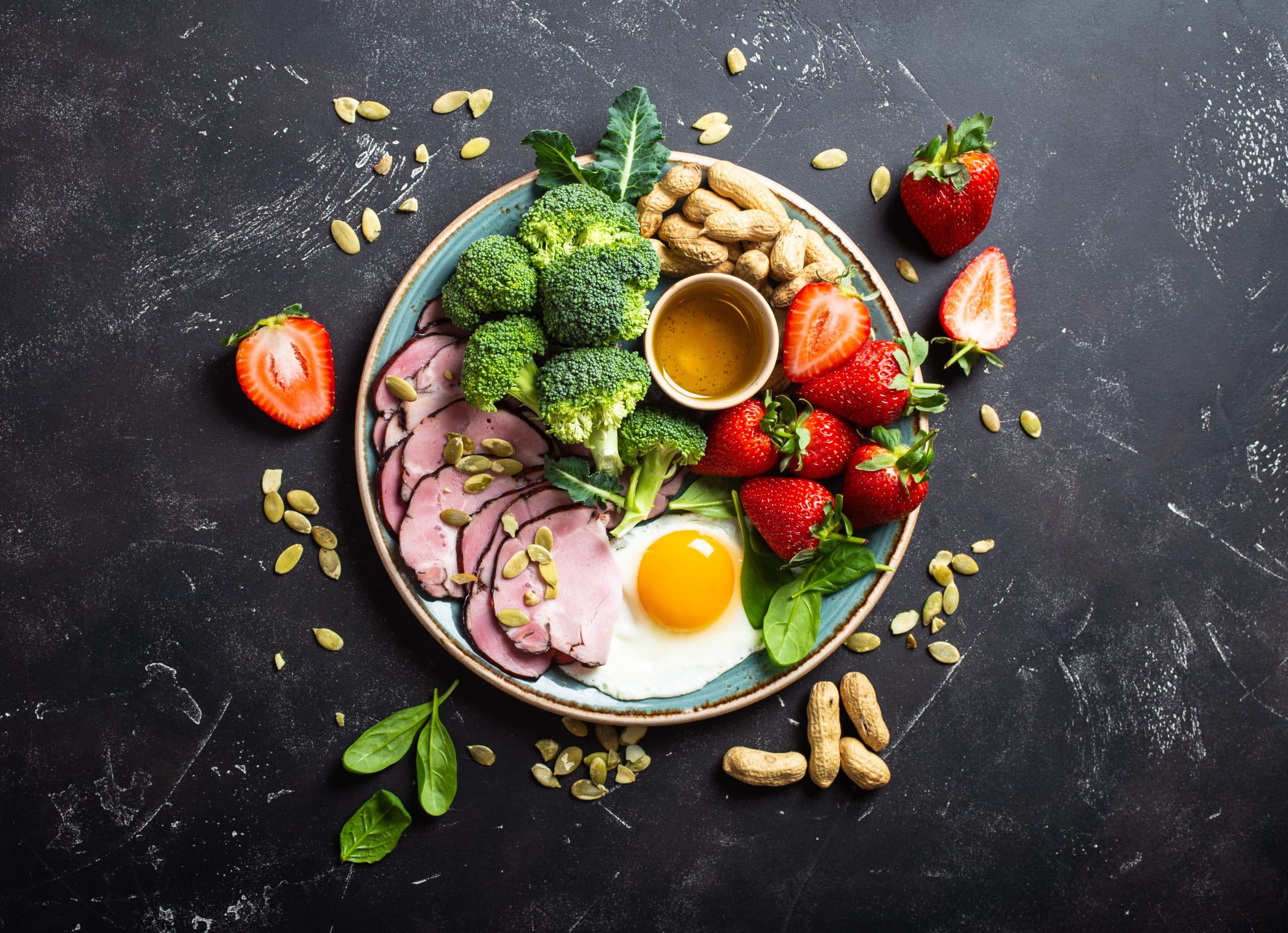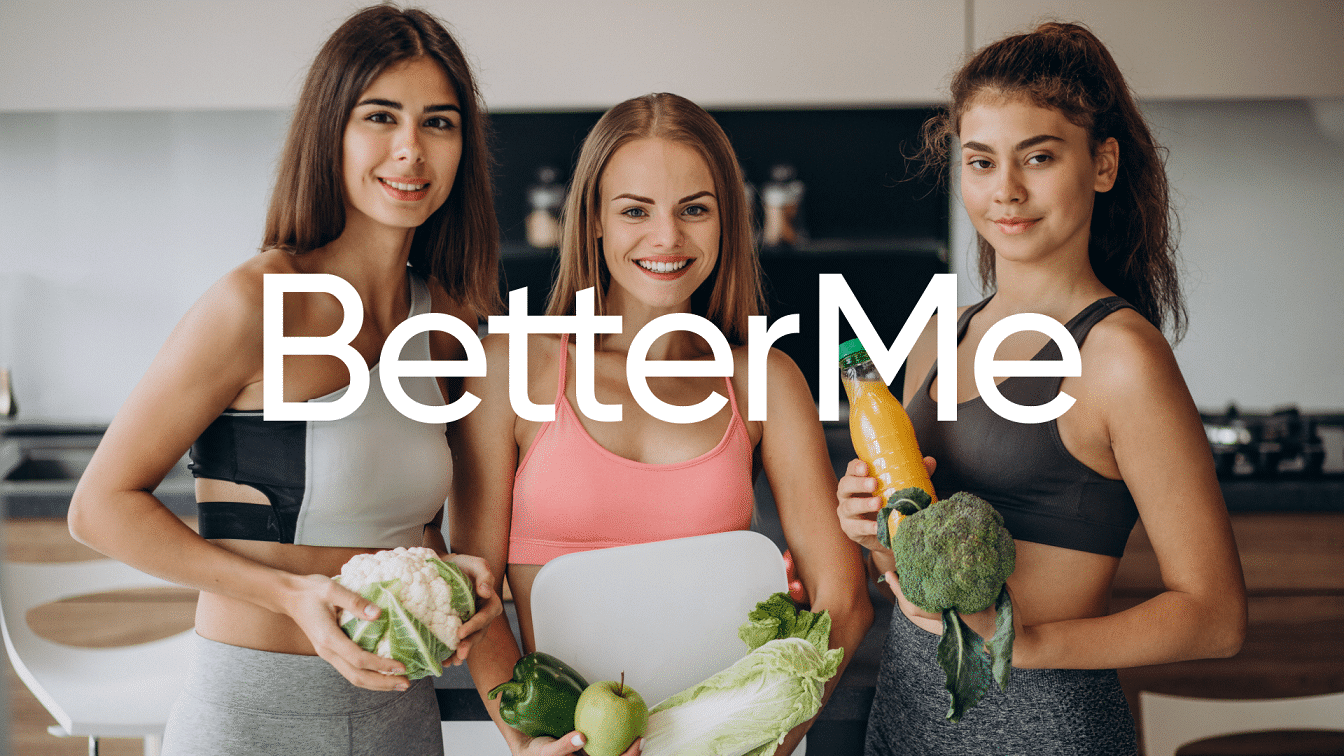A calorie surplus diet often brings to mind images of indulging in ice cream, fried foods, and other guilty pleasures. Many assume that consuming 3,000 calories a day means binging on unhealthy foods.
However, that’s quite far from the truth. Aside from gaining weight, a diet that is high in saturated fats and added sugar can spell trouble for your heart, blood pressure, and overall health (3) (6).
The good thing is there are healthier ways to meet this calorie requirement. A 3,000-calorie diet is one that can be filled with nutritious, satisfying, and delicious foods. It doesn’t need to be a monotonous meal plan either.
Let’s explore what 3,000 calories could look like when done right.
Is 3,000 Calories Enough to Bulk?
3,000 calories can be enough to bulk – it’s all dependent on your calorie needs, which are determined by factors such as body size, level of physical activity, and fitness goals.
For example, a 3,000-calorie diet may be enough for someone who is already at their desired weight or who has a smaller body frame. This person may only need to consume an extra 500-1,000 calories in order to start seeing gains.
However, someone who is taller, heavier, or more physically active may require even more than 3,000 calories to bulk up effectively.
Men generally need more calories than women due to differences in body composition and metabolism. Therefore, a 3,000-calorie diet may be suitable for men who are looking to bulk up, but not necessarily for women.
So, if you’re saying “I eat 3,000 calories a day as a female”, you may want to consider other factors that could affect your metabolism and nutritional needs to understand whether this surplus will work for your goals.
Lean and toned up body isn’t just a far-fetched fantasy. Check out the BetterMe app and watch it propel your weight loss journey into high gear!
What Can You Eat for 3,000 Calories in a Day?
Your 3,000-calorie meal prep must be nutrient-dense to support muscle growth, performance, and overall health. It should include a healthy balance of complex carbohydrates, lean protein, and healthy fats (1).
Here are some of the best foods to include in your daily 3,000-calorie meal plan:
- Starchy Vegetables: Potatoes, corn, peas, lima beans, squash, parsnips, yams, sweet potatoes, green peas, pumpkin
- Whole Grains: Quinoa, brown rice, oats, barley, rye, cornmeal, amaranth, spelt, teff, buckwheat, whole wheat
- Healthy Fats: Avocado, olive oil, almonds, walnuts, chia seeds, flaxseeds, coconut oil, peanut butter, tahini, hemp seeds
- Dairy and Alternatives: Milk, yogurt, cottage cheese, almond milk, soy milk, oat milk, cheese, kefir, Greek yogurt, quark
- Protein Sources: Chicken, turkey, beef, pork, eggs, tofu, tempeh, lentils, chickpeas, black beans, salmon
- Fruits: Bananas, apples, oranges, berries (blueberries or strawberries), pineapple, mangoes
- Leafy Greens: Spinach, kale, broccoli, cabbage, bok choy, collard greens
- Herbs and Spices: Turmeric, ginger, basil, rosemary, garlic
Is It Possible to Eat 3,000 Calories in One Meal?
Technically, yes, it is possible to consume 3,000 calories in one meal. For example, eating a large pepperoni pizza from a popular chain could easily exceed 3,000 calories, and a bacon cheeseburger with large fries and a milkshake can also total more than 3,000 calories.
Even some homemade meals, such as a large homemade lasagna, can reach 3000 calories, particularly if it’s made with high-fat ingredients such as full-fat cheese and ground beef. However, you would have to eat a very large portion to hit this calorie goal.
Consuming such a large amount of calories in one meal is not recommended for several reasons:
- The quality of these high-calorie foods may not be ideal for supporting overall health and performance (7)
- Eating such a large meal can leave you feeling overly full, bloated, and uncomfortable
- Consuming too many calories in one sitting too regularly may contribute to insulin resistance, weight gain, and other health issues over time (2) (4)
For most people, it’s more sustainable and beneficial to spread their calorie intake out throughout the day rather than consuming them all in one go. This allows for better energy levels, nutrient absorption, and satisfaction from meals throughout the day.
What Is Equal to 3,000 Calories for a Meal Plan?
A simple 3,000-calorie meal plan may look something like this:
Day 1
- Breakfast: Green smoothie (spinach, banana, almonds, oats, Greek yogurt, and a spoonful of honey)
- Snack: A handful of mixed nuts and an apple
- Lunch: Grilled chicken breast with quinoa and roasted vegetables
- Snack: Greek yogurt with blueberries
- Dinner: Salmon with brown rice and steamed broccoli
- Night Snack: Cottage cheese with a spoonful of peanut butter
Day 2
- Breakfast: Bowl of oats with almond milk, topped with berries and chia seeds
- Snack: A banana and a handful of almonds
- Lunch: Beef and vegetable stir-fry with brown rice
- Snack: Greek yogurt with honey and walnuts
- Dinner: Baked sweet potato with grilled chicken and side salad
- Night Snack: Casein protein shake
Day 3
- Breakfast: Scrambled eggs with spinach and whole-grain toast
- Snack: Greek yogurt with a spoonful of honey and mixed berries
- Lunch: Tuna salad with olive oil dressing
- Snack: A handful of mixed nuts and an apple
- Dinner: Pork loin with sweet potatoes and green beans
- Night Snack: Cottage cheese with flaxseeds
Day 4
- Breakfast: Protein pancakes topped with a spoonful of peanut butter and sliced banana
- Snack: Greek yogurt with a spoonful of honey and walnuts
- Lunch: Grilled chicken salad with avocado and olive oil dressing
- Snack: A handful of mixed nuts and an orange
- Dinner: Brown rice, broccoli, and beef stir-fry
- Night Snack: Casein protein shake
Read more: 16/8 Intermittent Fasting for Seniors: Benefits, Meal Plans, and Tips
Day 5
- Breakfast: Bowl of oats with almond milk, topped with sliced banana and chia seeds
- Snack: Greek yogurt with mixed berries
- Lunch: Quinoa, salmon, and avocado salad
- Snack: A handful of mixed nuts and an apple
- Dinner: Turkey and vegetable stir-fry with brown rice
- Night Snack: Cottage cheese with a spoonful of almond butter
Day 6
- Breakfast: Scrambled eggs with whole-grain toast and avocado
- Snack: Greek yogurt with a spoonful of honey and walnuts
- Lunch: Chicken and vegetable pasta with olive oil
- Snack: A handful of mixed nuts and a banana
- Dinner: Baked fish with sweet potatoes and steamed broccoli
- Night Snack: Casein protein shake
Day 7
- Breakfast: Green smoothie (spinach, banana, almonds, oats, Greek yogurt, and a spoonful of honey)
- Snack: Greek yogurt with mixed berries
- Lunch: Grilled turkey with quinoa and roasted vegetables
- Snack: A handful of mixed nuts and an apple
- Dinner: Grilled salmon with brown rice and green beans
- Night Snack: Cottage cheese with flaxseeds
We have a similar list of healthy and balanced meals that can provide you with around 3,000 calories on a vegan diet in our 3,000 Calorie Vegan Meal Plan article.
How to Eat 3,000 Calories a Day Cheaply
Eating 3,000 calories a day for a month can quickly add up in terms of cost, particularly if you’re buying all of your meals pre-made. However, there are ways to eat 3,000 calories every day on a budget:
- Bulk Buy: Look for wholesale stores or shop at bulk food departments where you can buy larger quantities at cheaper prices.
- Meal Prep: Plan and prepare your meals ahead of time so that you can make larger portions and freeze them for later.
- Shop In-Season: Purchase fruits and vegetables that are currently in season as they are generally cheaper.
- Choose Budget-Friendly Proteins: Chicken, eggs, beans, and lentils are affordable sources of protein that can be used in a variety of dishes.
- Buy Frozen: Buying frozen fruits, vegetables, and meats is often cheaper than buying fresh and they have a longer shelf life.
- Shop Sales: Take advantage of sales and discounts to save money on your grocery bill.
- Cook at Home: Eating out or ordering takeout can quickly add up the costs. Cooking at home is not only more affordable, it also allows you to control the ingredients and portion sizes.
- Use Less Expensive Cuts of Meat: Opt for less expensive cuts of meat that can be just as nutritious and tasty when cooked correctly. For example, chicken thighs are often cheaper than chicken breasts and have more flavor.
- Make Use of Leftovers: Get creative with leftovers to extend your meals. Leftover grilled chicken or other protein can be used in salads, wraps, or pasta dishes the following day.
- Local Farmers’ Markets: Consider shopping at local farmers’ markets. You can often find fresh, locally grown produce at lower prices and you’ll also be supporting local farmers.
Looking for a way to break the vicious cycle of weight loss and tone up all the jiggly parts? Watch the extra pounds fly off and your muscles firm up with the BetterMe app!
Tips for 3,000-Calorie Meal Prep
A 3,000-calorie meal plan for muscle gain is more effective when it is accompanied by proper meal prep. Here are some tips for successful 3,000-calorie meal prep:
- Plan Ahead: Choose a day of the week where you will plan your meals and grocery list.
- Make a List: Write down all the ingredients you need for the week’s meals so you can shop efficiently.
- Batch Cook: Spend a few hours on your designated meal prep day to cook larger portions of food that can be used throughout the week.
- Invest in Good Containers: Invest in good quality, air-tight containers in which to store your prepared meals. This will ensure they stay fresh longer and make it easy to grab on the go.
- Mix Up Your Meals: Don’t eat the same thing every day. Mixing up your meals will keep things interesting and ensure you get a variety of nutrients.
- Don’t Forget Snacks: Prepare healthy snacks for when hunger strikes between meals. This will stop you reaching for high-calorie, unhealthy options.
- Portion Control: Use measuring cups or a food scale to accurately portion out your meals. This will help you keep track of your calorie intake and ensure you hit your 3,000-calorie goal.
Following these tips can make meal prep easier and more efficient, which will save you time and money in the long term while still allowing you to hit your 3,000-calorie goal.
We have other tips for hitting your daily calorie goal in our blog, 3,000 Calories a Day.
Read more: The A-Z of Muscle-Gaining Meal Plans for Beginners
Can You Lose Weight on 3,000 Calories a Day?
Eating 3,000 calories a day for weight loss is highly unlikely unless you have incredibly high energy needs.
Generally, consuming more calories than your body burns will result in weight gain (8). However, there are certain situations where eating 3,000 calories a day may not result in weight gain:
- High Metabolism: People with naturally higher metabolisms can burn through calories more quickly without seeing significant weight gain. Also, endurance athletes who burn a lot of calories in training and competition will not gain weight with 3,000 calories a day.
- Muscle Building: If you’re following an intense workout routine or trying to build muscle mass, you may need extra calories to support your body’s energy needs.
- Medical Conditions: Some medical conditions such as hyperthyroidism can cause an increase in appetite and make it difficult for people to maintain their weight, even when consuming large amounts of food (5).
In most cases, eating 3,000 calories a day isn’t likely to achieve a calorie deficit and will probably not help you lose weight. You should consult a healthcare professional or registered dietitian to help determine the appropriate calorie range for you.
Check out our Calorie Deficit Breakfasts for some healthy, low-calorie breakfast options to help you reach your weight loss goals.
FAQs
Will I gain weight if I eat 3,000 calories a day?
The majority of people are likely to gain weight on 3,000 calories a day. However, whether you will gain or lose weight, how much weight that will be, and how quickly it will happen are all dependent on your body’s metabolism, physical activity level, and overall calorie expenditure.
What food has the most calories?
Foods that are high in fats, added sugars, and refined carbohydrates tend to have the most calories. For example, fast foods, fried foods, baked goods, and sweets are all calorie-dense.
In addition, certain healthy foods such as avocados, coconut, and nuts are high in calories due to their healthy fat content. It’s essential to consider both calorie content and nutritional value when you choose foods.
Can I eat 3,000 calories on a cheat day?
Yes, you can eat 3,000 calories on a cheat day, but you need to know that drastically overeating on a single day can disrupt your overall dietary pattern and potentially derail your diet.
It’s sometimes recommended to treat a ‘cheat day’ as a ‘treat meal’ instead – one meal that deviates from your usual eating plan, rather than an entire day of indulgence. In this way, you can enjoy your favorite foods in moderation without your health goals being compromised.
The Bottom Line
3,000 calories a day may sound like a lot, but it’s important to consider your individual energy needs and goals when determining the appropriate calorie intake for you.
Regardless of whether you’re trying to gain weight, lose weight, or maintain your current weight, it’s essential to focus on the consumption of nutrient-dense foods and maintaining a balanced diet.
DISCLAIMER:
This article is intended for general informational purposes only and does not serve to address individual circumstances. It is not a substitute for professional advice or help and should not be relied on for making any kind of decision-making. Any action taken as a direct or indirect result of the information in this article is entirely at your own risk and is your sole responsibility.
BetterMe, its content staff, and its medical advisors accept no responsibility for inaccuracies, errors, misstatements, inconsistencies, or omissions and specifically disclaim any liability, loss or risk, personal, professional or otherwise, which may be incurred as a consequence, directly or indirectly, of the use and/or application of any content.
You should always seek the advice of your physician or other qualified health provider with any questions you may have regarding a medical condition or your specific situation. Never disregard professional medical advice or delay seeking it because of BetterMe content. If you suspect or think you may have a medical emergency, call your doctor.
SOURCES:
- Defining a Healthy Diet: Evidence for the Role of Contemporary Dietary Patterns in Health and Disease (2020, mdpi.com)
- Excessive caloric intake acutely causes oxidative stress, GLUT4 carbonylation, and insulin resistance in healthy men (2017, ncbi.nlm.nih.gov)
- High Fat and Sugar Consumption During Ad Libitum Intake Predicts Weight Gain (2018, onlinelibrary.wiley.com)
- The Carbohydrate-Insulin Model of Obesity: Beyond ‘Calories In, Calories Out’ (2018, ncbi.nlm.nih.gov)
- The Central Effects of Thyroid Hormones on Appetite (2011, hindawi.com)
- The Evidence for Saturated Fat and for Sugar Related to Coronary Heart Disease (2015, ncbi.nlm.nih.gov)
- Ultra-Processed Foods and Health Outcomes: A Narrative Review (2020, mdpi.com)
- “Calories in, calories out” and macronutrient intake: the hope, hype, and science of calories (2017, journals.physiology.org)










